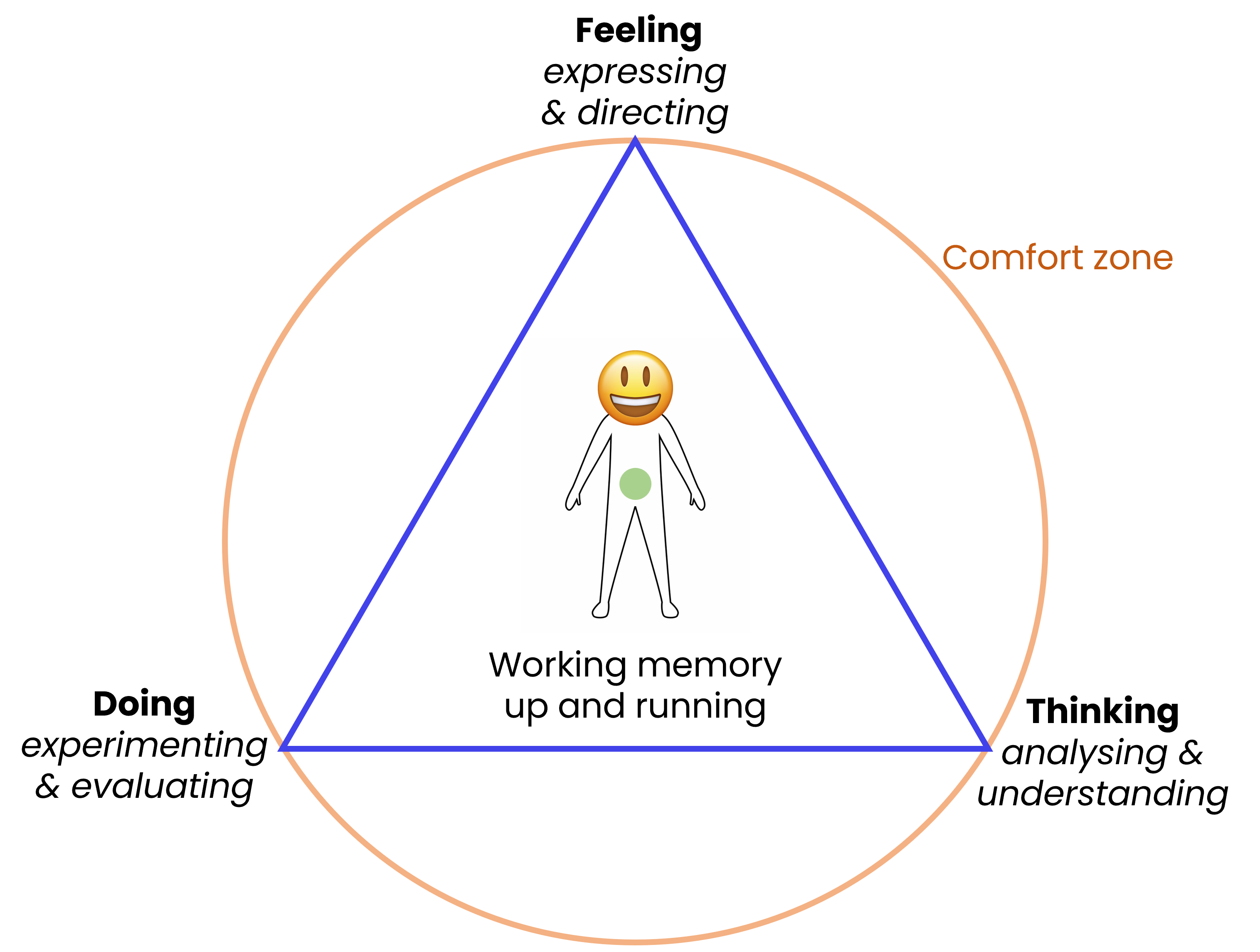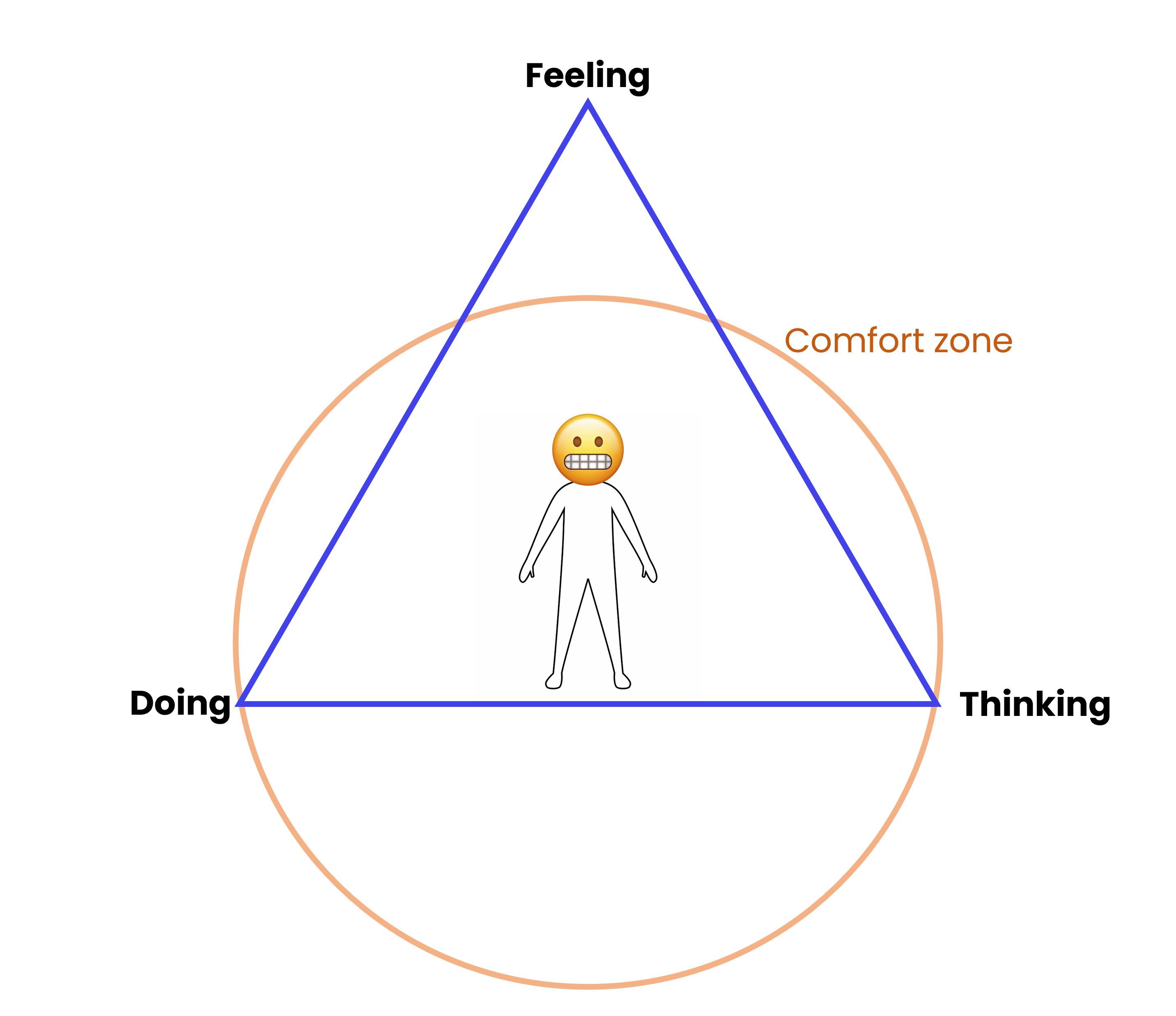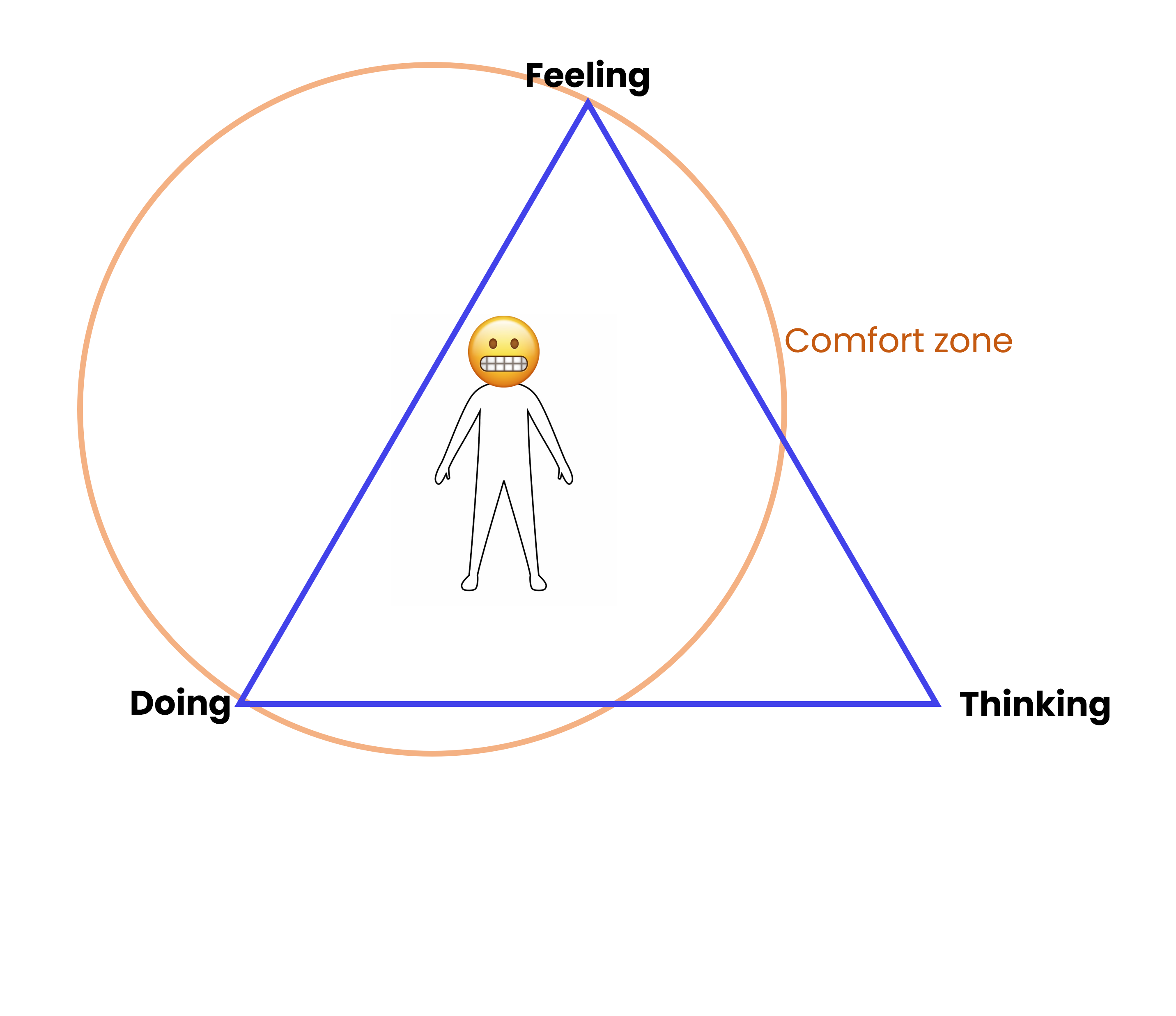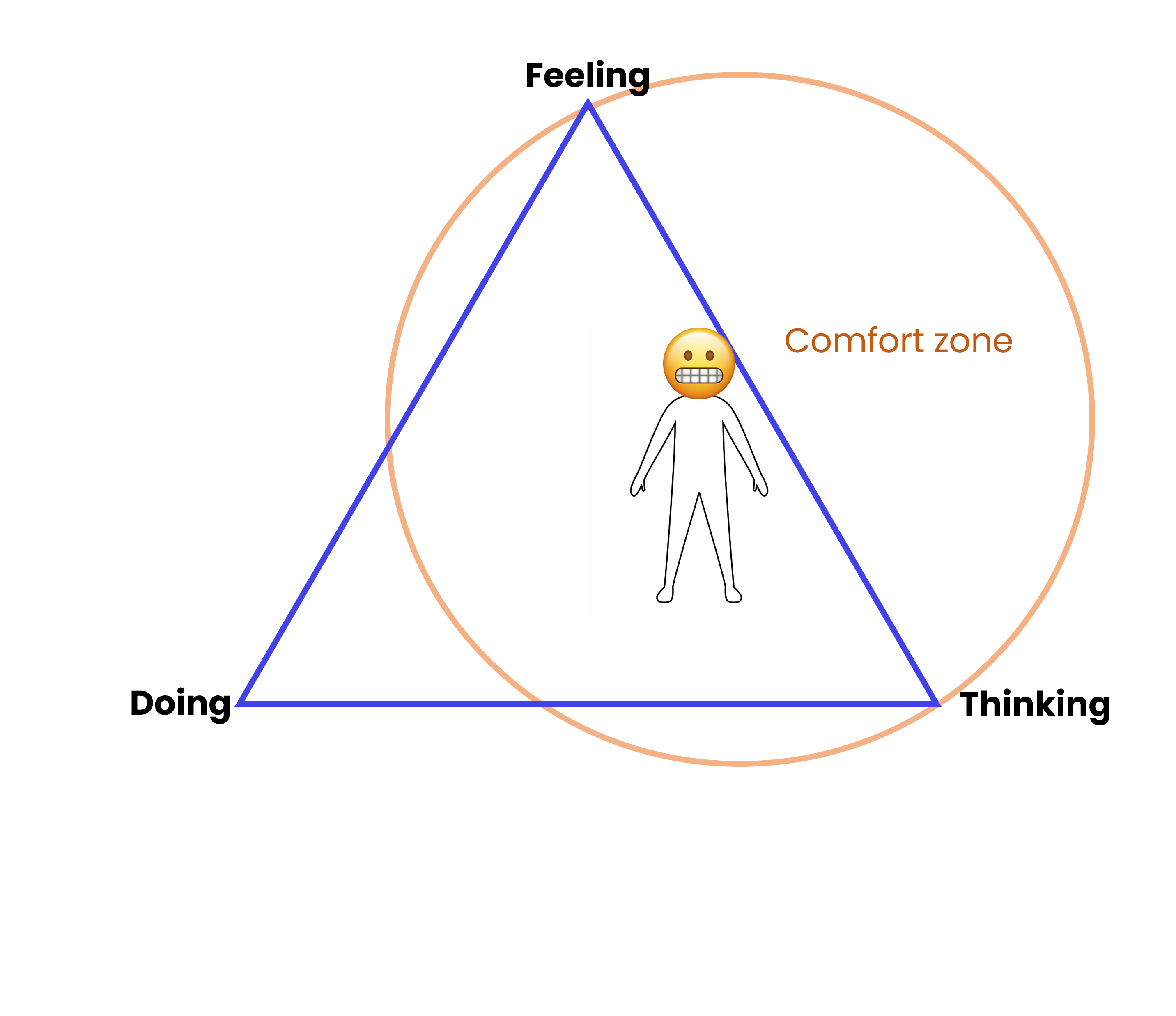Where do your challenges (reassurance behaviour) come from? We developed the model below that helps to understand them. It also helps to find the experiments you can use to overcome them.
We navigate life through feeling, thinking, and doing. In the ideal world we feel something, think about it, and then pick the right behaviour. Afterwards we evaluate the result and store the information for next time. When encountering another coamparable situation, our working memory can go back to the previous experience and find an adequate response. This is the case when you are in complete balance, a state depicted in the picture on the right. You experience functional stress and your working memory is up and running. Your energy is in the centre of mass (the green dot).

Most of us are not equally good at feeling, thinking, and doing. As shown in the pictures blow, stress pushes one of the three outside your comfort zone. Either, feeling, thinking, or doing becomes challenging. You then typically display too much of the behaviour that usually is your strength. By first regaining your working memory using the techniques explained in Step 9, you bring balance between feeling, thinking, and doing through experiments (clicks).
Following the feeling-thinking-doing model, you get three profiles. Of course they are over-simplifications. You are more complex than that. However, the model might give you a clue about your challenges and what to experiment with. In the context of preparing for a grant interview it offers proven tools to overcome obstacles.
| Thinking and doing are your strengths. Your directness and focus on content makes you an efficient communicator. | You predominantly do and feel. Thanks to your expressiveness you can easily stay in contact with the audience.
|
You are good at thinking and feeling. You are structured and a detailed thinker. |
| Feeling is your blind spot. You are unaware of the feelings triggered by the stressful situation. A sceptical looking face could make you think you have to stand your ground and you act to cope with the situation. You become rigid. You fight. You lock yourself up and loose connection with the audience. | Thinking is difficult in the heat of the moment. You feel the stress and without thinking you do what these feelings tell you to do. It makes you display too much expression. You speed up. All over the place. Chaos | Doing could be your Achilles’ heel. In the heat of the moment you are well aware of your feelings and potentially interpret them in a negative way: ‘they do not like me’. As a result you become too detailed and your answers become too long. |
| You can experiment with staying in contact with the audience, taking your time, pause, going less fast, nod, smile.
|
Your experiments could be to close down some of your communication, stand still, and smile a bit less. | You can experiment with shorter answers, and providing highlights. |


